Serena Chen (陳禹潔) draws on her background as a shoe designer and her time spent studying metalworking in Sweden to create eye-catching jewelry using layered suede strips and bold shapes.
On first glance, Chen’s designs, with their bright colors and playful motifs like birds, clouds and rainbows, seem whimsical and childlike, but closer inspection reveals delicate details like thin ribbons of suede, which are carefully packed together in metal settings so that only their edges are revealed, creating a striped effect. Each piece of the brand’s jewelry, which includes pendants, rings, earrings, cufflinks and brooches, is handmade by Chen in her Keelung studio.
Chen started her fashion career as an administrative assistant at a women’s footwear company before working her way up to a design position. Her duties included a stint in Shanghai, where she supervised a team of 18 shoemakers.
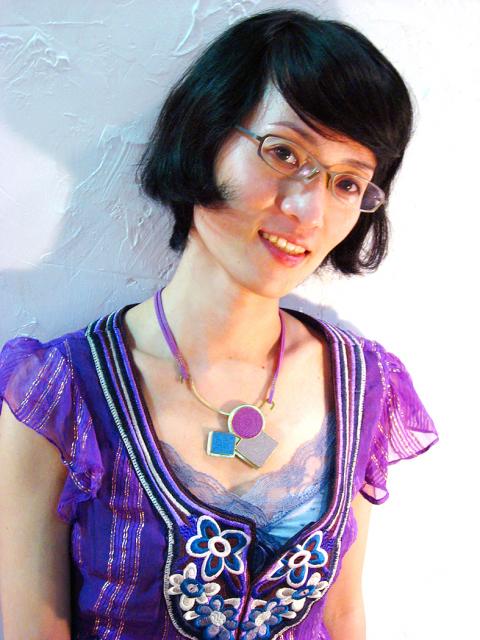
Photo Courtesy of Serena Chen
But Chen eventually grew disillusioned with the constraints of creating mass-market shoes.
“I lost interest, so I decided to leave my job and go to Europe for a short holiday,” Chen says. While in Sweden, Chen met the father of her then-boyfriend, who kept a silversmithing workbench in his house and taught Chen how to make sterling silver rings. Following his suggestion, Chen entered a year-long metal working course at Konstfack (also known as the University College of Arts, Crafts and Design) in Stockholm.
After returning to Taiwan in 2005, Chen worked at a jewelry company, but after about three years of producing simple, traditional designs, ennui set in once again.
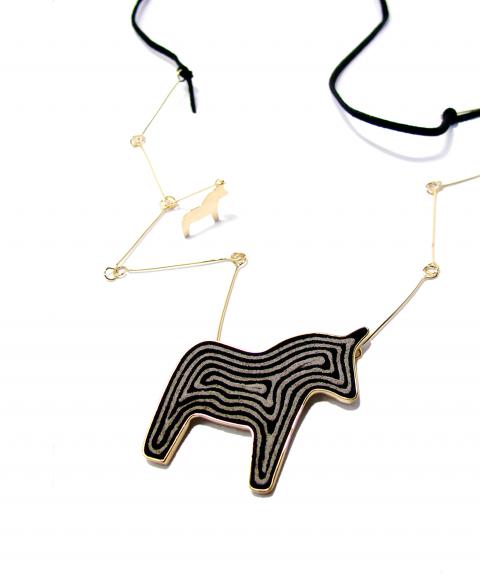
Photo Courtesy of Serena Chen
“It felt just the same as when I was still making shoes,” says Chen. In 2009, she decided to launch Serena Chen jewelry and spent about three months brainstorming how to create a signature style by drawing on her experience using unconventional materials in her studies at Konstfack, which included a class project called Hated Materials.
Students were told to bring a material they disliked working with to class. Chen brought plastic shopping bags because she could not stand the rustling sound they make. Her professor then announced that each student had to experiment with the items for three weeks.
“At first I panicked because I did not know what to do with it,” Chen says. She shredded the plastic, mixed it with glue, twisted it and then finally heated the material until it melted slightly. The results were round “stones” with colors and marble-like, striped designs that echo her current Serena Chen brand.
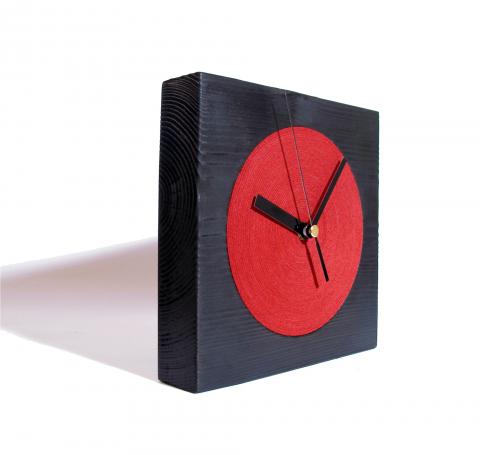
Photo Courtesy of Serena Chen
One day, while figuring out how to build pieces of suede up into a sturdy, three-dimensional shape, Chen decided to start using the material in place of enamel to create colorful pendants, earrings and rings.
“I remembered that I loved playing with leather and suede when I was a shoe designer,” Chen says.
For each piece, Chen begins by making a metal frame out of brass or sterling silver. Then she layers the suede inside strip by strip with a sharp awl. While developing the technique, Chen says she often missed and stabbed herself in the fingers, drawing blood, but now she can watch television while working on her jewelry. The most time-consuming part of the process is creating and polishing the metal components by hand, which can take up to two hours per item. Aside from electroplating, which she outsources to a workshop, Chen makes each of the pieces by herself.
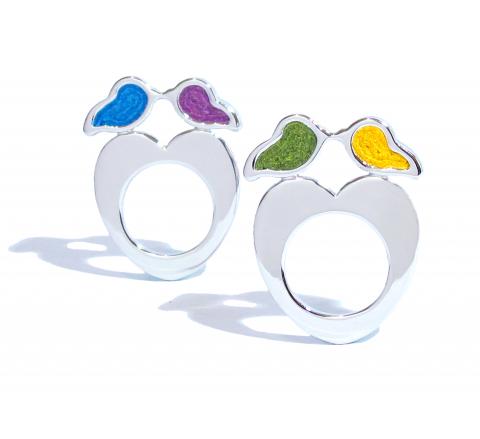
Photo Courtesy of Serena Chen
One of Serena Chen’s best-selling designs is a Dala horse (also known as the Dalecarlian horse) pendant based on a traditional Swedish decorative motif that began as small wooden carvings in the 17th century. Her fascination with Dala horses began after a class project at Konstfack that covered Swedish identity.
“As a foreigner living there, my first impression was that Swedish people are actually a bit like Dala horses,” Chen says.
“Sweden is a very modern country, but they have also done an excellent job of preserving traditional crafts,” she explains.
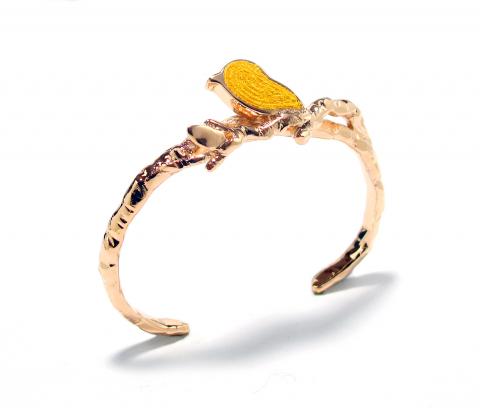
Photo Courtesy of Serena Chen
In addition to designing for the Serena Chen brand, which will expand into housewares this month with the introduction of small suede and wood clocks inspired by the growth rings of trees, Chen also teaches at the Xue Xue Institute (學學文創志業) part-time. In her classes, Chen follows the spirit of her Konstfack studies and encourages students to experiment with metalworking techniques. In one class, she taught students how to forgo soldering irons and stitch pieces of sterling silver together by first punching small holes into the metal.
In the next few months, Chen hopes to open a combination storefront and studio in Taipei City, where she can sell her pieces and teach one-on-one metalworking classes.
“At the beginning of each class, I introduce my students to foreign jewelry artists and show them photos of their work,” Chen says. “I want to show them how varied jewelry design can be.”

Photo Courtesy of Serena Chen
Telling tales
Motifs from nature frequently appear in Chen’s work. She says she is inspired by the mountain location of her studio and home in Keelung.
“When I wake up, I hear birds singing. When I open my studio window, I see birds or squirrels outside,” Chen says. Several of her designs are created in small collections that together tell a story. The pendants in Bulletin of Mood (心情告示榜), one of the company’s best-selling series, are meant to discreetly broadcast the wearer’s emotions with weather motifs. A multi-colored umbrella that can’t quite provide shelter from a large gray cumulus and raindrops stands for sadness, while a rainbow peeking from between two clouds represents a gradual recovery from depression. Finally, a purple sun emerging from clouds in shades of turquoise and sky blue symbolizes happiness and joy.
Most of Serena Chen’s jewelry ranges in price from NT$1,880 to NT$3,580. For a list of stores, visit Chen’s blog (in English and Chinese) at serenachen-design.blogspot.com.

A vaccine to fight dementia? It turns out there may already be one — shots that prevent painful shingles also appear to protect aging brains. A new study found shingles vaccination cut older adults’ risk of developing dementia over the next seven years by 20 percent. The research, published Wednesday in the journal Nature, is part of growing understanding about how many factors influence brain health as we age — and what we can do about it. “It’s a very robust finding,” said lead researcher Pascal Geldsetzer of Stanford University. And “women seem to benefit more,” important as they’re at higher risk of

Eric Finkelstein is a world record junkie. The American’s Guinness World Records include the largest flag mosaic made from table tennis balls, the longest table tennis serve and eating at the most Michelin-starred restaurants in 24 hours in New York. Many would probably share the opinion of Finkelstein’s sister when talking about his records: “You’re a lunatic.” But that’s not stopping him from his next big feat, and this time he is teaming up with his wife, Taiwanese native Jackie Cheng (鄭佳祺): visit and purchase a

April 7 to April 13 After spending over two years with the Republic of China (ROC) Army, A-Mei (阿美) boarded a ship in April 1947 bound for Taiwan. But instead of walking on board with his comrades, his roughly 5-tonne body was lifted using a cargo net. He wasn’t the only elephant; A-Lan (阿蘭) and A-Pei (阿沛) were also on board. The trio had been through hell since they’d been captured by the Japanese Army in Myanmar to transport supplies during World War II. The pachyderms were seized by the ROC New 1st Army’s 30th Division in January 1945, serving

The People’s Republic of China (PRC) last week offered us a glimpse of the violence it plans against Taiwan, with two days of blockade drills conducted around the nation and live-fire exercises not far away in the East China Sea. The PRC said it had practiced hitting “simulated targets of key ports and energy facilities.” Taiwan confirmed on Thursday that PRC Coast Guard ships were directed by the its Eastern Theater Command, meaning that they are assumed to be military assets in a confrontation. Because of this, the number of assets available to the PRC navy is far, far bigger